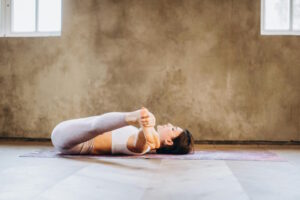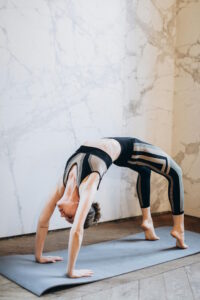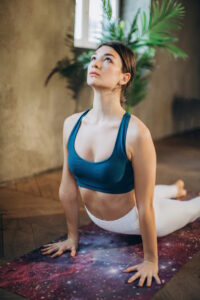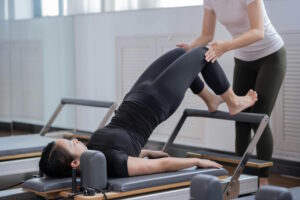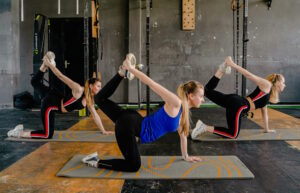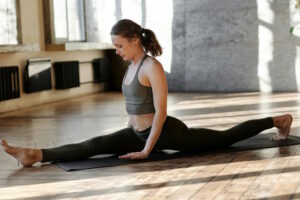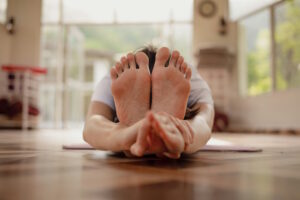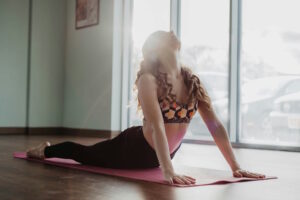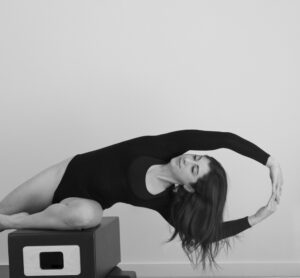
Pilates is a renowned fitness system celebrated for its ability to enhance strength, flexibility, and body awareness. Two primary approaches to Pilates exist: Mat Pilates and Equipment Pilates. While both offer numerous benefits, they differ significantly in terms of execution, equipment utilization, and overall experience. In this comprehensive guide, we will explore the distinctions between Mat Pilates and Equipment Pilates, addressing common questions and helping you make an informed choice that aligns with your fitness goals and preferences.
Is mat or machine Pilates better?
The choice between Mat Pilates and Equipment Pilates depends on various factors, including your fitness goals, experience level, and personal preferences. Here’s a breakdown to help you decide which is better for you:
Mat Pilates:
Mat Pilates is often preferred when:
1. Convenience is Key: Mat Pilates requires minimal equipment – just a comfortable exercise mat – making it highly accessible for home practice or group classes. If convenience and simplicity are priorities, Mat Pilates may be the better choice.
2. Budget Constraints: Mat Pilates is cost-effective since it doesn’t involve the purchase of specialized equipment. It’s an attractive option for those looking to start Pilates without a significant financial investment.
3. Foundational Learning: Mat Pilates is an excellent starting point for beginners as it focuses on fundamental movements and principles. It’s a great way to build a solid foundation in Pilates before progressing to more advanced techniques.
4. Core and Bodyweight Focus: Mat Pilates places a strong emphasis on core strength and utilizes bodyweight resistance. If you’re specifically interested in improving your core stability and don’t require added resistance, Mat Pilates may be suitable.
Equipment Pilates:
Equipment Pilates is often preferred when:
1. Variety and Resistance Are Desired: Equipment Pilates, such as the reformer, Cadillac, and chair, offer a wide range of exercises with adjustable resistance. If you seek a diverse and challenging workout that targets specific muscle groups, equipment Pilates is an excellent choice.
2. Rehabilitation and Specialized Training: Equipment Pilates can be adapted for rehabilitation purposes and tailored to address specific fitness goals. It is often recommended for individuals with injuries or those looking for advanced training options.
3. Advanced Techniques: Advanced practitioners who have mastered Mat Pilates may find equipment-based workouts more challenging and rewarding. The machines allow for progression to complex movements and sequences.
4. Assisted Stretching and Support: Equipment Pilates provides support and assistance during certain exercises, which can be beneficial for individuals with limited flexibility or mobility issues.
Ultimately, neither Mat Pilates nor Equipment Pilates is inherently better than the other; it depends on your individual preferences and fitness objectives.
Is Pilates better with equipment?
Pilates can be highly effective with or without equipment, depending on your goals and needs. Here are some considerations to help you determine if Pilates is better with equipment:
Pilates with Equipment:
1. Targeted Resistance: Equipment Pilates allows for precise control of resistance, making it highly effective for targeting specific muscle groups and achieving strength gains.
2. Variety of Exercises: The equipment provides a wider range of exercise options, allowing for more diversity in workouts and the ability to progress to more advanced techniques.
3. Progressive Challenge: Equipment Pilates offers the ability to increase resistance as you become stronger, providing a progressive challenge that can help you reach your fitness goals.
4. Assistance and Support: Some equipment, like the reformer, offers assistance and support during exercises, making it suitable for individuals with limited mobility or injuries.
Pilates without Equipment (Mat Pilates):
1. Accessible and Convenient: Mat Pilates requires minimal equipment, making it accessible for home practice or group classes. It’s also cost-effective.
2. Core Strength and Bodyweight Resistance: Mat Pilates emphasizes core strength and utilizes bodyweight resistance. It’s excellent for building core stability and improving overall body control.
3. Foundational Learning: Mat Pilates is a great starting point for beginners as it focuses on fundamental movements and principles, helping you establish a strong foundation in Pilates.
4. Mind-Body Connection: Mat Pilates encourages a deep mind-body connection through controlled movements and focused breathing, enhancing body awareness.
What is more effective, Mat Pilates or Reformer?
The effectiveness of Mat Pilates versus Reformer Pilates depends on your fitness goals and preferences. Here’s a comparison of the two to help you decide which may be more effective for you:
Mat Pilates:
· Core Strength: Mat Pilates is excellent for developing core strength and stability. It focuses on bodyweight resistance exercises that engage the abdominal muscles.
· Flexibility: Mat Pilates incorporates stretching and flexibility exercises, improving overall mobility and range of motion.
· Portability: You can practice Mat Pilates anywhere with minimal equipment, making it convenient for home workouts or group classes.
· Foundational Learning: Mat Pilates is often recommended for beginners as it provides a solid foundation in Pilates principles and movements.
Reformer Pilates:
· Resistance and Variety: Reformer Pilates offers adjustable resistance through springs, providing targeted muscle engagement and a wider range of exercise options.
· Full-Body Workout: The reformer machine allows for a full-body workout, targeting specific muscle groups and providing a comprehensive fitness experience.
· Progressive Challenge: Reformer Pilates can be tailored to your fitness level, allowing for progression as you become stronger and more skilled.
· Assistance and Support: The reformer provides support and assistance during certain exercises, making it suitable for individuals with limited mobility or injuries.
Ultimately, the choice between Mat Pilates and Reformer Pilates depends on your specific fitness goals and preferences. Both can be effective in improving core strength, flexibility, and overall fitness.
What is the most effective form of Pilates?
The most effective form of Pilates depends on your individual goals, preferences, and fitness level. Here’s a brief overview of some popular forms of Pilates and their effectiveness for different objectives:
1. Mat Pilates: Mat Pilates is effective for building core strength, improving posture, and enhancing body awareness. It’s accessible, convenient, and suitable for beginners looking to establish a strong foundation in Pilates.
2. Reformer Pilates: Reformer Pilates is highly effective for a full-body workout, targeting specific muscle groups and providing adjustable resistance. It offers a wide range of exercises and is suitable for individuals of all fitness levels.
3. Cadillac (Trapeze Table) Pilates: The Cadillac machine is versatile and effective for both stretching and resistance exercises. It’s particularly useful for rehabilitation and improving flexibility.
4. Chair Pilates: The Pilates chair offers a challenging workout that enhances core strength and balance. It’s effective for advanced practitioners looking to diversify their routines.
5. Tower (Wall Unit) Pilates: Tower Pilates combines elements of the reformer and Cadillac, offering a comprehensive workout with adjustable resistance. It’s effective for targeting specific muscle groups and improving overall strength and flexibility.
In conclusion, the choice between Mat Pilates and Equipment Pilates depends on your goals, preferences, and individual needs. Both approaches offer unique benefits, and the most effective form of Pilates is the one that aligns with your fitness objectives. Whether you prefer the simplicity and accessibility of Mat Pilates or the versatility and resistance options of Equipment Pilates, both can contribute to improved strength, flexibility, and overall well-being.
